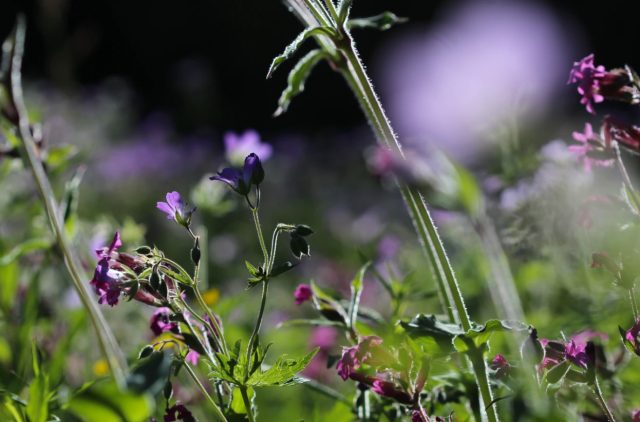For some people, flowers are the meaning of a garden. Tell a child to sketch a garden, and they’re starting to draw many flowers. Provide a gardener with no other spot than that front lawn, and then a flowerpot will soon appear. You will have blooming perfection throughout your life, regardless of your average experience of flower gardening.
But it will also benefit you to learn a few basics of how flowers actually work and what flowers needed to grow very well. A garden full of flowers can make it more appealing than even your neighbors can resist taking a glance.
Perennials Care Guide
To ensure that the perennials in your garden stay beautiful and healthy, you use these guides, also you can contact Arlington garden and tree experts. If you love the gorgeous leaves or lovely blooms of your perennials, that really is the roots you actually purchase, since the roots help the plants to return back each year.
Bare-Root Perennials
Currently, it’s much less costly than container-grown varieties of a similar plant. As their names imply, they are generally accessible in early spring and therefore are sold—just the plant roots, usually packaged in peat moss or related material. And before putting them in the ground, soak the roots in water.
Container-Grown Perennials
It is commonly available, and it is easy to use. Begin by creating a hole that is a little deeper but not deeper than your existing perennial pot. When its roots begin to grow in patterns along the pot’s side, detach the roots and stretch them out if the plant has been rootbound. Then, around the roots, firm the water and soil well.
Annuals and Perennials
These are two basic types of flowering plants, as long as gardens are involved. Year in and year out, perennials could still mesmerize, while annuals could also instantly produce fast blooms.
Through one growing season, annuals go throughout their whole development process: forming seeds, producing buds, growing roots and leaves, sprouting from a seed, and sometimes die.
They become familiar among gardeners since they bloom their heads off all season, with good care. Perennials were plants which root chains for many decades or centuries, exist in the underground alive.
Flowering perennials are every garden’s cornerstone. But not all perennials are equally formed. Others have a special season of bloom, and most have seasons of flowering. After 2 – 3 years, short-lived perennials, such as columbines, lupines, and poppies, can die. If you wish to have an excellent list of flowering perennials, you can outsource or do your research about flowering perennials.
The Best Season To Plant Perennials
In fall or spring, when temperatures are colder, flowering perennials are best planted. These seasons give them time for new roots to settle down and grow.
While perennials are on discount, and before the winter arrives, you usually plant your perennials in fall. Remember that smaller perennials in 4-inch containers cost less while catching up with larger perennials in one year of cultivation!
Make sure to consider your planting area before picking perennials. Consider even the conditions for shade/sun and watering and putting identical plants around each other.
Figure out when that perennial blooms so that you could always pick plants that hold the shade flourishing during the growing period. Simulate it out with a garden pattern with shorter perennials in the front, and taller perennials in the back.
How To Maintain A Perennial Garden
Perennial gardens require less attention than lawns, but they require daily care to stay healthy and look the best. Here are the things you need to maintain a perennial garden.
Tools and Materials
- Organic mulch
- Perennial plant fertilizer
- Steel rake
- Lawn rake
- Garden spade or half-moon edger
- hoe with a sharp, small blade
- Sprinkler, soaker hose, or water source
- Trowel
- Hand pruners or scissors
Here are the steps to follow :
- It would help if you dispose of spent flowers, snip off flower stems above a bud or leaf when they stop blooming, and use hand pruners or scissors to keep them from germinating seeds. Take rotting leaves away.
- You have to check for the problem and pests. It would help if you looked for leaves with ragged edges, holes, spotted, discolored, or sticky leaves. Abnormally or chewed buds or flowers, as well as damaged items.
- When it comes to watering, use a trowel to dig into the top 2 to 3 inches of soil. Water is applied more efficiently to drip irrigation pipe to soaker hoses than to outdoor sprinkler systems.
- Prevent soaking plant leaves late each day to avoid certain plant pathogens from spreading.
- In your weekly or regular inspection, eliminate weeds when you see them. To hack them away underneath the soil surface, use a hoe with a sharp, small tip, or take them using your hand.
- Using a garden spade or half-moon edger, keep your garden and lawn boundaries tidy and defined. Move the tool blade straight back down to the edges of the lawn, about 3 to 4 inches, facing the garden.
- To clear a patch of soil, pull the handle towards you. Repeat from around garden circumference. Compost the scraps of turf.
- Fertilize early in the spring with a slow-release of granular fertilizer, which is made for perennial gardening. Follow the kit instructions for the right quantity to be added. Replace organic mulch, such as leaves or shredded bark, or renew it.
- Cover sensitive plants once the ground freezes with such a 4- to 6-inch layer of loose mulch in cold-winter climates.
- When the tops turn brown or leave uncut for protection against any cold, try cutting down perennials for about 8 to 10 inches of the soil. Cut all decaying stems down to the ground throughout the spring and clear out the debris.
Provide Additional Nutrition
Phosphorus, which can be seen with the second number in the N-P-K ratio, is among the essential nutrients needed for flower development. cSo, to increase flower quality, look for a soil modification or organic fertilizer with a higher middle number.
The marketplace has many industrial products. Simply apply them as per the guidelines in the kit.
Takeaway
If a perennial has the potential to keep blooming, you should eliminate those deadhead flowers to avoid the accumulation of seed pods. So the plants can germinate the sign once more to flower! Regular deadheading enables seasonal flowers to bloom and makes the garden look neat and fresh.

A professional writer with over a decade of incessant writing skills. Her topics of interest and expertise range from health, nutrition and psychology.




